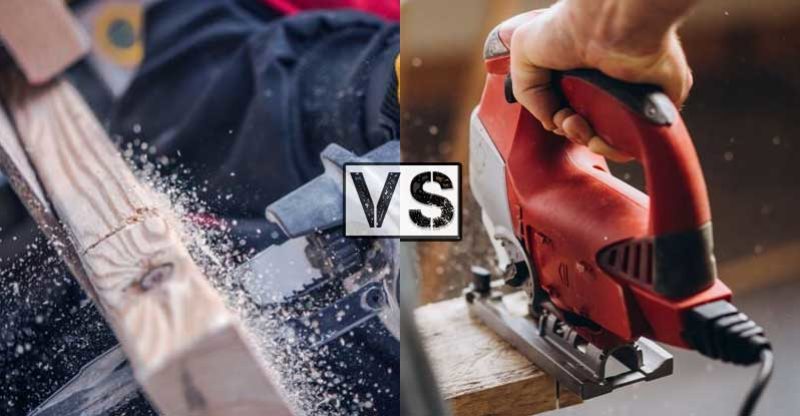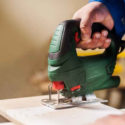Reciprocating Saw vs Jigsaw: Which One Should You Get?
Saws are essential items to have in any workshop, but given the many variants of this tool that are available now, it can be difficult to figure out which ones you actually need.
The hand saw is inexpensive, effective, and takes up little space in the workshop. You should definitely have one of those hanging around in your workshop, but beyond that most basic type of saw, are there others that you must have?
I would argue that yes, you do need more than just a hand saw in your workshop and two other options worth considering are the reciprocating saw vs jigsaw.
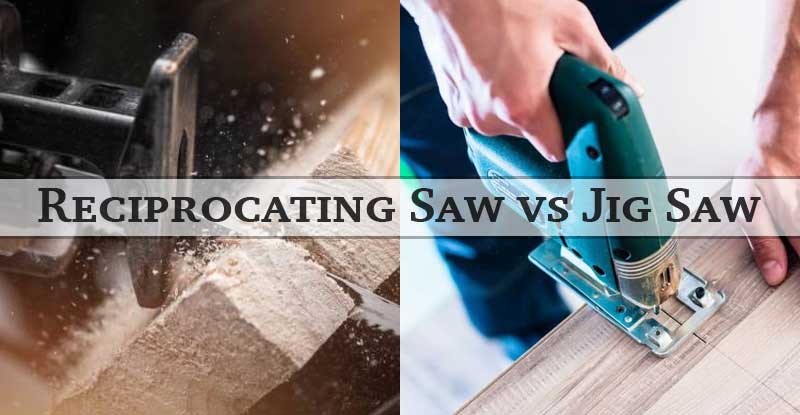
These are two power tools that can do a lot of cutting, but what’s interesting about them is that they vary significantly in terms of how they are ideally used.
When you pick up a reciprocating saw, you are doing so because you need to cut through a thick material in a hurry. With a high-end reciprocating saw in hand and the right type of blade equipped, you can cut through a thick plank of wood, solid steel, and other tougher materials relatively easily.
Jigsaws cannot be used to cut through overly thick or tough materials, but that’s fine because they have a different specialization. Jigsaws are great for curved cuts. Place a wooden plank underneath a jigsaw and you can round out its edges in seconds. You can even use this power tool to create holes in the materials you’re working on.
How They Operate?
The name of the reciprocating saw already tips off how it manages to get the job done. Once you turn it on, the blade installed will move back and forth rapidly.
The blade of the reciprocating saw features teeth. While the blade is moving back and forth quickly, the teeth tear into the material and you can gradually guide them down until there is nothing left to cut.
Jigsaws have smaller blades that go down into the material and then back up into the housing. They cut through the material on the upstroke, although some jigsaws are configured to cut on the way down.
If you tweak the orbital setting of the jigsaw, it will also move back and forth while going up and down as it cuts through the material.
6 Things Reciprocating Saw vs Jigsaw
1. How Their Blades Differ?
When you look at the blade that a reciprocating saw typically uses, you’ll notice that it almost looks like a straight razor with teeth carved into it.
The blades of reciprocating saws can vary in terms of their makeup – there are steel, bimetal, and tungsten carbide blades – and their length. The shorter blades are better balanced, but the longer ones are more flexible.
Reciprocating blades are also remarkably strong.
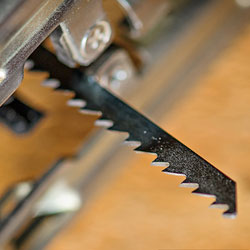
Jigsaw blades look kind of similar to the reciprocating saw blades. They can also be made out of steel, bimetal, or tungsten carbide. Length does not matter that much when picking out a blade for a jigsaw.
Blades used in jigsaws are also not that strong, but they can get in real close to your target and make highly precise cuts.
2. Comparing Their Price Tags
There’s not much difference between the reciprocating saw and the jigsaw in terms of pricing.
If you’re looking to purchase either a reciprocating saw or a jigsaw from a well-known manufacturer, then expect to spend somewhere around $150 to $200.
You can get a jigsaw at around $50 if you don’t mind missing out on some top-end power.
Some of the more powerful reciprocating saws can also surpass the $200 mark.
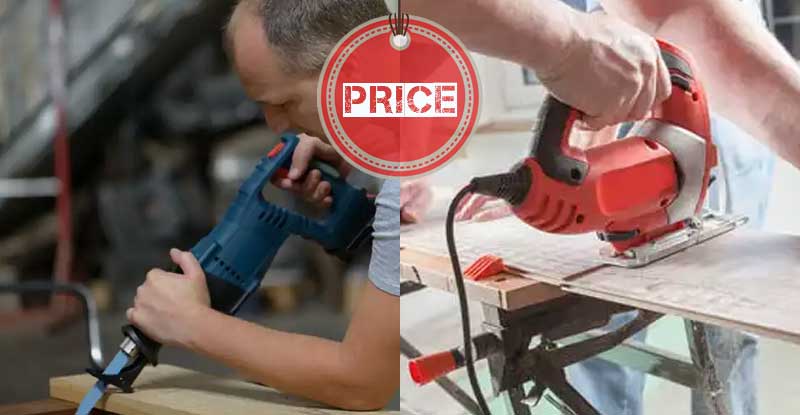
3. The Similarities That Exist between the Two Saws
We’ve already talked a bunch about how reciprocating saws are different from jigsaws and vice versa, but they obviously share some similarities as well.
The similarity that stands out the most is that they are both oscillating saws.
Because of the way it’s designed, the blade of the reciprocating saw cuts through materials by moving back and forth in a horizontal manner. Jigsaw blades also move from one end to another but they go up and down while cutting instead.
As noted above, the blades used in both reciprocating saws and jigsaws can be steel blades, bimetallic blades, or tungsten carbide blades. That also means that you should take care of the blades in the same ways.
4. When Should You Use A Reciprocating Saw?
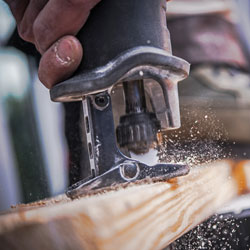
The main thing to remember about a reciprocating saw is that it is not a tool designed for making precise or elaborate cuts. Instead, you should reach for a reciprocating saw when you need to tear through something in a hurry.
Think of the reciprocating saw as a tool designed for demolition. If you’re doing some remodeling in your garage or perhaps your kitchen and you need to remove some things, you can pick up the reciprocating saw and quickly get to work.
Don’t be afraid of using the full power of the reciprocating saw.
Even if you find some rebar or tiles getting in the way, you can bust out the reciprocating saw to quickly get rid of those and proceed with your remodeling project.
The reciprocating saw still has a place in the workshop, but it’s better suited for the purposes of deconstructing more than anything.
Also, reciprocating saws are great tools for pruning trees and other plants you may have in your yard.
5. When Should You Use A Jigsaw?
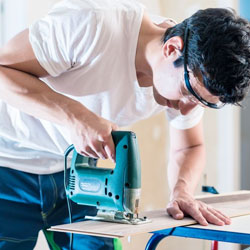
Jigsaws typically aren’t as powerful as reciprocating saws, but that’s fine. Power is still important to the jigsaw, but what you need the most from it is its ability to be highly precise.
If you’re working on a project where you have to make several exact cuts, a jigsaw can be hugely helpful to you.
Another reason why it’s a good idea to have a jigsaw ready to go inside your workshop is because it can execute a wide variety of curved cuts. You can also use a scroll saw and band saw to make curved cuts, but those tools take up way more space inside the workshop. In situations where you’re only going to make a few curved cuts, the jigsaw is what you’ll want to have on hand.
Jigsaws are also useful for cutting holes into the middle of materials. Because they are handheld, you can place them on the center of the plank of wood or sheet of metal you’re cutting and create some holes if you need those for your project.
That portability is nothing to just shrug off either. In a smaller workshop where there’s not enough space for plenty of power tools, a jigsaw is something you should have no problem keeping in storage.
Also, the jigsaw is a remarkably easy to use power tool. Even those who possess minimal experience working with power tools should be able to quickly pick up on how a jigsaw works and they should also be able to use it safely and properly right away.
6. Who Should Purchase Reciprocating Saws And/Or Jigsaws?
Because of the power they possess, a reciprocating saw will always have a role to play inside even a hobbyist’s workshop, but I wouldn’t necessarily say that it’s an essential purchase. Unless you foresee plenty of deconstruction projects in your immediate future, there’s likely no need for you to get a reciprocating saw.
On the other hand, jigsaws are helpful to hobbyists and professionals alike. The versatility it offers is very valuable and you will always find a use for a tool that excels at making highly precise cuts. Jigsaws can even be used for chopping up materials provided that they aren’t too thick.
If money’s tight or you just want to get the essentials, then the jigsaw should be your priority.
Reciprocating saws and jigsaws are remarkable tools that have helped to make the lives of woodworking amateurs and professionals all around the world so much easier.
Those two types of saws would make for fine additions to just about any workshop. However, if you are asked to choose between the two, my advice is to go for the jigsaw.
You are simply going to get more usage out of a jigsaw and if you invest in a good one, it can even cut through certain types of stronger materials just like a reciprocating saw can.
The reciprocating saw is a good luxury item to have in a workshop, but a jigsaw is the definition of a must-have power tool.

